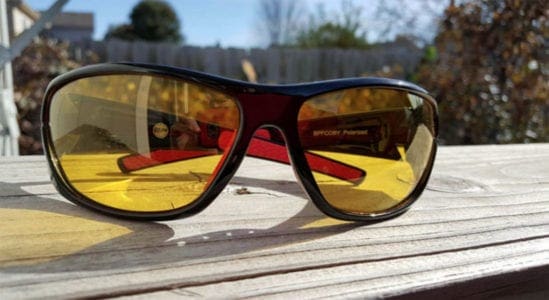Although Most of The Driving Takes Place During Daylight Hours, More Accidents Occur at Night and Most Fatal Accidents Happen During the Night.
The professional driver understands that it takes maximum defensive driving skills to drive safely at night. Add rain to the mix and the risk multiplies. Between 12 a.m. (midnight) and 6 a.m. is the riskiest time for crashes, because there are fewer drivers yet more accidents than any other time of the day.
Many professional drivers have routes or trips that begin or end in darkness. Safe night driving requires preparation, alertness, and a heavy dose of common sense.
What Makes Night Driving Difficult?
- Poor visibility – Obviously and naturally, there is very less natural light on the road.
- People feel sleepier during darkness than during daytime – It is universal that one tends to feel sleepier at night.
- Silence around makes one feel drowsier – If you will be driving alone and late at night, chances are there will be fewer vehicles around. Silence on the road also makes you feel at ease and consequently sleepy.
- Roadway lighting – Roadway lighting is often very poor. In rural areas there is little or no overhead lighting and in urban locations the lighting may not only be poor but confusing as well due to neon signs and other distractions. The most dependable lighting will come from your own vehicle.
- People drink mostly at night – That is true and implies to people around the world. For some of them it’s a habit, while for others it’s a party night.
- Car and truck lights from opposite direction disturb – Direct and sharp light from the opposite vehicle hits the eyes of the driver and can lead to an accident do to temporary blindness.
- For those who are visually impaired – Those who have problem with their eyesight or suffer from night blindness driving at night is a major challenge
Tips for Safe Driving at Night
- The condition of other drivers: late in the evening and during the early morning hours is when you are most likely to meet fatigued or impaired drivers. Be alert for motorists that are driving aggressively or erratically during these times. Maintain a safe distance from these drivers and be prepared to stop. If a vehicle comes into your lane head-on, slow down and move your vehicle as far to the right as you can. Never take evasive action into an oncoming lane of traffic.
 Reduce your speed. Fatigue, combined with less available light, reduces vision and reaction time. Reduce your speed when driving at night and especially on unfamiliar roads. Maintain a four second interval when following the vehicle ahead as a space cushion.
Reduce your speed. Fatigue, combined with less available light, reduces vision and reaction time. Reduce your speed when driving at night and especially on unfamiliar roads. Maintain a four second interval when following the vehicle ahead as a space cushion.- Keep your headlights and windshield clean. Being able to see other cars and be seen by other drivers helps a lot! If it’s bug season, stop and wipe them off at each break.
- Don’t overdrive your headlights. Especially when driving on smaller roads without reflector strips, follow a four-second rule. Take note of where the far reach of your low beams is, then count four seconds. If you pass that original place in less than four seconds, then you are going too fast. Two to three seconds may be an acceptable range for major highways with reflector strips. Remember that posted speed limits are for driving in daylight with dry road conditions.
- Make sure your headlights are properly aimed. Check with your service provider or maintenance shop for the proper procedure. During your pre- and post-trip inspections make sure that your lights are operational and clean.
- Use high beams wisely. The use of high-beam headlights when there isn’t oncoming traffic can extend the time that you must react to hazards. Never use your high beams because the high beams of the oncoming car stay on. This will only increase the chances of a head-on crash.Don’t look at oncoming headlights. Focus on the edges of oncoming traffic and bright objects, as staring directly into headlights can blind you for up to five seconds until your eyes adjust.
- Look around. Keep your eyes moving from side to side, rather than focusing only on the center line and the road ahead, to help your eyes stay adjusted to the dark and avoid falling victim to “highway hypnosis,” a state in which reaction time is greatly impaired.
- Wear sunglasses during the day. Wearing sunglasses during bright days helps keep your eyes more sensitive for driving in the dark.
- Do night driving glasses really work? It is an all too common misconception that yellow tinted or yellow polarized night driving glasses are beneficial for night time driving. The thought is, the yellow or amber color reduces glare and improves contrast… Studies have shown that they impair visual performance and retard glare recovery.
- If you’re tired, get off the road and sleep. If you feel sleepy, caffeine can never be a substitute for sleep, nor is loud music or rolling down the windows. Pull over and rest and stop every two hours for a break out of your vehicle even if you’re not feeling sleepy. Don’t set out on a trip tired.
Originally Posted on the Idealease Safety Bulletin



